The first time I boarded a float plane, in August 2003, I had no idea what to expect. But, from the instant we lifted off from the little airfield in Petersburg, Alaska, and drifted into the misty skyscape over the rainforest in a trusty DeHavilland Beaver, my life would never be quite the same.
I was warned, before I took the short 25-minute flight across the narrow passage to Point Baker on Prince of Wales Island, that the flight would be a part of the experience. “That, alone, is worth the price of admission,” a friend with hours of float-plane time under his belt explained. “There’s nothing quite like it.”
I’ll admit, there was some anxiety about taking off and landing on the water, but when that first flight ended with a feather-soft landing on the dark, deep waters of the protected port on the northern tip of the island, I was instantly looking forward to the ride back a week later.
Since that time, I’ve flown in dozens more Beavers, a few Otters, a Helio or two and a Caravan. Every time, without fail, these trusty planes have delivered me and my fishing gear into some of the most incredible country in the world. Once, while flying over the boreal woods of northwest Ontario, the pilot let me take the sticks very briefly — the 10 minutes or so I spent “flying” are among the most memorable minutes of my life, even if one of my passengers filled the barf bag from the seat behind me.
I’ve had lots of memorable float-plane rides. Here are the five best, in no particular order:

The northern Rockies of British Columbia
More Like This
The view from a float plane is macro — you can see the details below you. It’s not at all like the contorted view you might get from the window seat on a 737, where you can really only make out the features on the ground as you take off and land. And, in the wilds of northern British Columbia where at the northern end of the Rocky Mountains, the views of the high peaks are absolutely stunning.
It’s possible to catch a glimpse of gravity-defying mountain goats on the slopes as the pilot slowly gains altitude, and the notion that you’re managing to fly over a landscape in 25 minutes that might take a week to traverse on foot is thrilling. And, very often, the views are not below you. Instead, the cliffs and crags are right outside the window, seemingly within arms length. Taking in the sights as the pilot guides the plane through the gun-sight passes of the mountains is a thrill, no matter how many times you do it.

Across Lake Athabasca
It’s easy to call the Great Lakes along the border of the U.S. and Canada by their given group moniker, but, farther north, in the boreal woods of Canada, there are lakes that are just as great as the five we’re most familiar with here in the Lower 48. Lake Athabasca, for instance, is but one of those mighty freshwater seas. Here, it’s well over an hour’s flight from Stony Rapids, Sask., where the Fond-du-lac River flows into the lake from the east to the First Nations village of Fort Chipewyan in Alberta. The flight takes you over the seemingly endless sea of water, and, thanks to the low elevation, it offers an incredibly unique look at Athabasca Sand Dunes Provincial Park. For more than 100 kilometers along the lake’s south shore, active sand dunes line the shore — the blonde sand gives the waters a Caribbean tinge when viewed from the air.

Anchorage to Bristol Bay
Not unlike the views of the northern Rockies in B.C., this float-plane ride takes passengers over some of the most breathtaking landscapes in North America. From the air, passengers will glide over Lake Clark National Park and Preserve and, farther south, Katmai National Park and Preserve. These mountains wear glacial caps all year long, and provide life-giving freshwater to the lakes and streams that nurture the planet’s most-prolific salmon runs. Anyone who has chased the big rainbows of southwest Alaska has very likely cruised over this amazing landscape in a float plane — and even if a passenger flight from Anchorage takes off from an airstrip and lands on an airstrip in Iliamna or King Salmon, the view is still unbelievable. And, unless they’re dead inside, passengers can’t stop looking out the window.

Lake Superior to the wilds of northwest Ontario
The biggest of the Great Lakes just feels different than the other massive bodies of water along the U.S./Canada border. This giant freshwater sea is the largest lake in North America, and, from its northern shores at Thunder Bay, it’s the jumping-off point for anglers headed north into the boreal woods of Ontario to chase pike, walleye and giant, wild brook trout. From the air and headed north, the lake gives way to a seemingly endless spruce and birch forest pitted by pothole lakes. The farther north you go, the wilder the country, and the better the fishing. And, the return flight is just as incredible as the lake takes shape on the horizon, you get the feeling that you’re somewhere coastal, not smack-dab in the middle of the continent.

Great Slave Lake to the barren lands
The vast majority of Canada’s human population lives within 100 miles of the U.S. border, but there are legit cities that have sprung up in the wild lands to the north. Think Whitehorse and Dalton City. Or, better yet, think Yellowknife on the shores of the massive Great Slave Lake. This might be the northern pike capital of the world, but the lake is also the runway for float-plane journeys into the barrens of the Northwest Territories. The tundra is starkly beautiful, and it can be unbelievably fishy. But the first 20 or 30 minutes of the flight north from Yellowknife take passengers over the lake — even from the air, you can’t see the far shore. And once you leave the lake behind, you’re really, truly in some of the most remote country in North America.




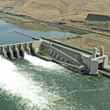
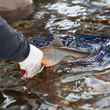




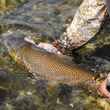
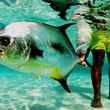



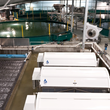



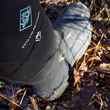
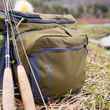



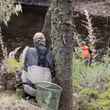
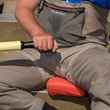



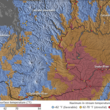
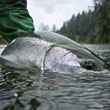
Comments